![]()
Tue, Nov 15, 2011 | WikiLeaks
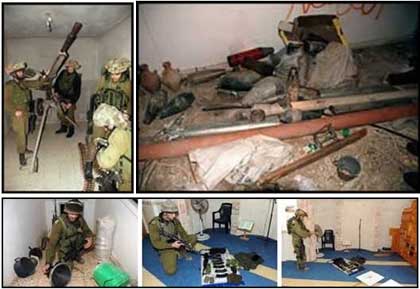
Weapons, including an anti-tank cannon, discovered in a Jabaliya mosque during the Gaza Operation. (Source: MFA Israel)
WikiLeaks: U.S. Discusses Operation Cast Lead Investigations with IDF
The meetings reviewed legal and operational issues related to IDF activities during Operation Cast Lead, as well as specific incidents of alleged Israeli IHL violations during the fighting.
Source: WikiLeaks
Reference Created Classification Origin 10TELAVIV182 2010-01-27 09:23 SECRET Embassy Tel Aviv
VZCZCXRO9048
OO RUEHROV
DE RUEHTV #0182/01 0270923
ZNY SSSSS ZZH
O 270923Z JAN 10
FM AMEMBASSY TEL AVIV
TO RUEHC/SECSTATE WASHDC IMMEDIATE 5161
INFO RUEHXK/ARAB ISRAELI COLLECTIVE PRIORITY
RUEHAM/AMEMBASSY AMMAN PRIORITY 7181
RUEHEG/AMEMBASSY CAIRO PRIORITY 5298
RUEHJM/AMCONSUL JERUSALEM PRIORITY 3599
RUEHGV/USMISSION GENEVA PRIORITY 0656
RHEHNSC/NSC WASHDC PRIORITY
RUCNDT/USMISSION USUN NEW YORK PRIORITY 9702S E C R E T SECTION 01 OF 07 TEL AVIV 000182
SIPDIS
E.O. 12958: DECL: 01/26/2020
TAGS: PREL PHUM KWBG PTER IS
SUBJECT: A/S POSNER DISCUSSES CAST LEAD INVESTIGATIONS WITH
IDFREF: A. A) 09 TEL AVIV 02831
¶B. B) 09 TEL AVIV 02342
¶C. C) 09 TEL AVIV 2283Classified By: Charge d’Affaires Luis G. Moreno for reasons 1.4 (b) and
(d).1.(S) Summary: Assistant Secretary for Democracy, Human
Rights, and Labor Michael Posner held extensive meetings
January 6 and 7 with IDF Chief of Staff LTG Gabi Ashkenazi,
J5 Chief Major General Amir Eshel, IDF Southern Commander
Major General Yoav Galant, IDF Judge-Advocate General
Brigadier General Avichai Mandelblit, Israel Air Force
Commander Major General Ido Nehushtan, Strategic Division
Command Brigadier General Yossi Heymann, and former IDF
intelligence chief BG Yuval Halamish who heads the IDF,s
Goldstone Committee. The meetings reviewed legal and
operational issues related to IDF activities during Operation
Cast Lead, as well as specific incidents of alleged Israeli
IHL violations during the fighting. Posner,s interlocutors
agreed that mistakes had been made at times by Israeli
soldiers and reported that, although it was too early in the
investigatory process to draw firm conclusions, that internal
investigations would likely result in accountability for some
soldiers involved — either criminal prosecutions or
disciplinary action. They also evinced a willingness to
examine operational issues and decisions to determine whether
the IDF should adjust its doctrine for fighting in crowded
urban areas. Overall, the IDF presented a convincing case
that it is dealing seriously with these issues and that the
IDF exerts more energy trying to minimize civilian
casualties than almost every other military in the world.
Because no perfect paradigm exists for fighting a terrorist
enemy that deliberately bases itself in crowded civilian
areas, IDF senior commanders expressed interest in further
detailed discussions with us, and perhaps other friendly
countries, on international humanitarian law issues related
to this problem. End summary.¶2. (SBU) Assistant Secretary for Democracy, Human Rights,
and Labor Michael Posner met with senior IDF officials during
his visit to Israel. On January 6, A/S Posner met with IDF
Chief of Staff LTG Gabi Ashkenazi, J5 Chief Major General
Amir Eshel, IDF Southern Commander Major General Yoav Galant,
Strategic Division Command Brigadier General Yossi Heymann,
and IDF Judge-Advocate General Brigadier General Avichai
Mandelblit. On January 7, A/S Posner met with Israel Air
Force Commander Major General Ido Nehushtan. U.S. meeting
participants included the Ambassador and Embassy Tel Aviv
DATT COL Richard Burgess, as well as delegation members
Deputy Legal Advisor Robert Harris, Army JAG School Executive
Director COL (ret) David Graham, DRL,s Multilateral and
Global Affairs Office Director Joseph Cassidy, and poloffs.¶3. (S) During these meetings, A/S Posner stressed the purpose
of his visit was to “listen and learn” from Israeli
interlocutors, and to confer about how the Government of
Israel could most effectively tell its “story” regarding
Operation Cast Lead to the international community. He said
the United States is attempting to encourage a responsible
debate within a complex multilateral landscape, and
acknowledged the GOI’s concerns regarding biased and
disproportionate criticism of Israeli actions during Cast
Lead. A/S Posner said Washington understands the distinction
between human rights law and international humanitarian law,
stressing that the latter is the legal regime applicable to
situations of armed conflict such as during the Israeli Cast
Lead operation in Gaza. He noted that the United Nations and
many state members of the Human Rights Council, however, want
to apply human rights law, and not IHL, to the Gaza conflict,
which he described as “wrong-headed.”¶4. (S) A/S Posner said the United States understood the
complexities of operating in a densely populated area while
facing an asymmetric threat. He stressed the importance of
changing the public debate to better reflect a changing world
in which tough decisions were made in the face of these
asymmetric challenges. A/S Posner said responding to the
specific allegations contained in the Goldstone Report would
be important, but that the GOI could also usefully make
clearer the steps it is already taking to examine its
operational decisions and rules of engagement. Announcement
of a review process that would examine the accountability
processes undertaken in Israel for allegations of IHL
violations, as well as addressing broader doctrinal issuesTEL AVIV 00000182 002 OF 007
and compilation of lessons learned could help change the
debate internationally.Challenges of Asymmetric Warfare
——————————–¶5. (S) Senior IDF officials expressed frustration that world
opinion appeared set against Israel, despite the numerous
measures the IDF took to protect civilians while facing an
enemy that deliberately targeted civilians by basing their
operations and hiding articles of war within densely
populated urban areas. IDF Chief of Staff LTG Ashkenazi
described his job as protecting Israeli civilians, using the
most precise weapons possible to take out threats. He argued
that terrorists deliberately target Israeli citizens from
urban areas because Israel is bound by legal norms that deny
the IDF the ability and capability to effectively attack
enemy targets. LTG Ashkenazi said Israel will likely face
the same asymmetric challenge in the near future while facing
the same limitations. J5 Chief Major General Eshel echoed
the limitations of a small country such as Israel in facing
terrorist threats.¶6. (S) Air Force Commander Major General Nehushtan lamented
the difficulty of conveying to modern civil societies the
complexity of non-conventional warfare. He noted that Hamas
and Hizballah were targeting civilians from within civilian
population centers. The difference, however, was that
Israeli citizens were deliberately targeted — “they know
that our citizens are our soft underbelly,” Nehushtan and
Eshel said. Both Nehushstan and Eshel pointed out that the
challenge faced by the United States in protecting Iraqi and
Afghan civilians was qualitatively different from the IDF,s
responsibility to prevent threats to its own citizens.
Nehushstan argued that terrorists deliberately chose to
target Israeli civilians and hide arms in Palestinian
civilian population centers. He said it was difficult to
convey “Hamas’ twisted logic” of endangering its own
civilians, such as when it shelled the border crossings two
weeks prior to the Israeli withdrawal from Gaza, knowing that
such attacks would cause closures and international outcry.
Nehushtan claimed that the Goldstone report made Hamas’
strategy successful. He also commented that there were “no
solutions to firing back on those firing from within a
civilian population” and rhetorically offered to step down if
anyone had a better solution.¶7. (S) MG Nehushtan and MG Eshel also outlined the many
measures the IDF took to reduce collateral damage. Eshel
said the IDF put more limitations on its operations than any
other military — “we cannot allow ourselves to make some of
the mistakes (leading to civilian casualities) that the
United States and the United Kingdom have made.” Nehushtan
noted the IAF’s sole use of precision munitions, the accuracy
of which was now measured in meters, and the IDF,s
monitoring of the presence of civilians through real-time
video feeds. He cited IAF pilots’ authority to use their own
judgment on aborting missions, and outlined procedures such
as “roof knocking” that seek to encourage civilians to
evacuate each targeted building — a procedure he claimed was
not used anywhere else in the world. MG Eshel extolled an
atmosphere within the IDF that encourages subordinates to ask
questions or even challenge commanding officers if they
believed an operation was flawed. In Operation Cast Lead,
Nehushtan said the IAF had 99 percent success rate for
hitting targets, had destroyed accidentally only one house
due to a mistaken target, and required evidence of the
evacuation by civilians of all targeted houses before final
approval to fire was given. BG Halamish added that the IDF
made over 250,000 phone calls to evacuate houses – a process
also unprecedented in the world. Nehushtan also noted that
the IDF had improved from 1:1 to 1:10 the civilian to
terrorist casualty ratio in the past ten years in its attacks
on terrorist indirect fire teams, due partly to IDF
procedures that call for diverting missiles if the intended
targets come near civilians. Nehushtan admitted, however,
that IDF artillery and tank units did not follow the same
procedures and caused most of the Palestinian civilian
casualties in Cast Lead.¶8. (S) MG Nehushtan reviewed the meticulous planning that
went into any IAF military operation, in which the distance
and damage limitation were measured in meters from a target
to surrounding houses. Such targets were selected and
approved by only a few commanders based on intelligence,TEL AVIV 00000182 003 OF 007
while the minimal ordnance possible was used to avoid
collateral damage, even if military necessity would otherwise
call for a more explosive munition to ensure a target was
destroyed. Based on this process, he told of dozens of
aborted attacks during Cast Lead, in cases where targets were
not approved due to concerns about collateral civilian
damage. MG Eshel noted that the IDF was “chasing the worst
terrorists on the face of the earth,” but in many cases could
not act against them due to the presence of civilians. He
noted in particular that Ismail Haniyeh’s Hamas headquarters
were located in the basement of Shifa Hospital, Gaza’s
largest, because Hamas knew it was safe from IAF attack. The
IDF had good intelligence that Hamas was hiding weapons in
civilian houses. BG Halamish also commented that the Hamas
police force did not carry out police functions, but were a
part of the Hamas combat structure.¶9. (S) IDF Judge-Advocate General Brigadier General Avichai
Mandelblit noted that the laws of armed conflict were applied
carefully to Cast Lead; every operational plan included a
legal annex. The only exception from the international armed
conflict protections laid out in the Geneva Conventions
involved the legal status of Hamas detainees, whom the IDF
maintains are not entitled to prisoner of war protections
contained in the 3rd Geneva Convention. He confirmed a
recent decision by LTG Ashkenazi to include legal advisors
“on the ground” at the brigade level. (Comment: This is a
significant step, and something the U.S. has been
recommending to the IDF for years. Combined with a possible
decision to assign humanitarian advisors to unit commanders
down to battalion level, this reflects a commitment to
providing commanders real-time advice on the humanitarian and
legal ramifications of asymmetrical conflict. End comment.)Investigations
————–¶10. (S) LTG Ashkenazi said the IDF began investigating
allegations arising from Operation Cast Lead well before the
Goldstone Report was published. The IDF wanted to know what
had happened and why — this approach was not unique to Gaza,
but was conducted after all IDF operations. He admitted that
the IDF had made mistakes, but that Israeli forces had “done
their best.” He explained the investigative process,
including the role of BG Mandelblit and both the Attorney
General and, ultimately, Supreme Court oversight. LTG
Ashkenazi described the difficult conditions in which IDF
forces were asked to operate, featuring friendly fire
incidents and unintended civilian casualties — but in every
case, he stressed, the IDF never deliberately attacked a
civilian.¶11. (S) BG Mandelblit provided a status report of Israeli
investigations highlighting five specific incidents from
Operation Cast Lead cited in the Goldstone Report:— January 3 Al-Maqadmah Mosque Incident: Mandelblit said
that the initial field investigation was headed by a one-star
general. As the initial allegations were that the attack
came from an airplane, the investigators used satellite
images both before and after the alleged attack to determine
whether there had been structural damage to the mosque
consistent with an air attack. Not finding any, the initial
investigation concluded that there had been no attack. Based
on new information contained in the ICRC and in Goldstone
reports, Mandelblit reopened the case. The new field
investigation found video footage of an unmanned aerial
vehicle (UAV) attack against two armed Popular Front
operatives who were located at the time immediately outside
the mosque. Mandelblit said the UAV fired two missiles
against the operatives; the first missile failed, but the
second hit the operatives. UAV footage of the strike
provides evidence that shrapnel entered the mosque through an
open door. While the mosque was not intentionally targeted,
Mandelblit said, the shrapnel from the attack hit civilians
located inside. Mandelblit said these facts were just
recently obtained, and that the investigation was still
on-going. The case would be referred to LTG Ashkenazi once
the investigation was concluded.— Referring to a broader problem, Mandelblit said available
intelligence also made clear that a large number of rockets
were stored in mosques; secondary explosions following
initial strikes on mosques confirmed the presence of these
arms. (Note: Posner and delegation were shown video footageTEL AVIV 00000182 004 OF 007
of an initial explosion inside a mosque, followed by
secondary explosions. End note.) Mandelblit said that from
a legal perspective, the IDF could attack a mosque if it were
used to store rockets and missiles. However, the IDF took
precautions even in such cases to attack in the early morning
hours when no one was praying at the mosque.— January 3-4 Attack on Al-Samouni Family: (Comment: Of
the narratives provided by Mandelblit, this was the most
complicated, suggesting that the report contained herein may
not be entirely correct and complete.) Mandelblit noted
three separate investigations regarding this incident; the
first was initiated prior to the release of the Goldstone
Report. He said the three investigations focused: (1) on the
alleged intentional shooting of an Al-Samouni family member
after leaving the family’s home: the destruction of the
family home; and — most seriously — 21 deaths resulting
from an airstrike. Based on the results of these
investigations, Mandelblit said it was becoming clearer that
these incidents were connected in a complicated chain of
events. He provided a sketch of the incidents, in which the
al-Samouni family evacuated its home and sought refuge in a
nearby house. IDF forces in the area suffered an RPG attack,
and determined that the attack came from the same house.
According to Mandelblit, unknown to the IDF units in the
field, the Al-Samouni family and approximately 50 other
civilians had taken shelter in the house. A brigade
commander authorized an attack against the house — “making a
mistake” — which resulted in the roof collapsing on some of
the civilians inside. Mandelblit said the investigation was
still on-going. He said the attack on the civilians was not
intentional — real-time cockpit recordings record a pilot
alerting ground troops to the presence of civilians fleeing
the house and calling on ground forces to stop shooting.
Mandelblit said the case will be referred to LTG Ashkenazi
following the investigation’s completion, that the IDF would
study this case carefully from an operational standpoint for
“lessons learned” and that he had reached no conclusions as
yet about individual accountability. He noted that he could
request additional details or a continued investigation if
not satisfied with the results.— January 5 incident involving the Abd al-Dayem condolence
tents: Mandelblit noted that this incident — in which a tank
allegedly fired flechette shells intentionally at civilians
— is still under criminal investigation. He said that 20
Palestinians provided testimony; one of the Palestinians
concurred with IDF soldiers’ statements that the area was
filled with Hamas rocket launch teams. None of the
Palestinians apparently saw a tank aiming at the tents.
According to Mandelblit, the IDF confirmed the use of two
flechette shells in a “relatively open area” against rocket
launch teams. He said that the IDF participants said that
they did not see any tents. He acknowledged a timing
discrepancy of about thirty minutes regarding Palestinian
testimony and the IDF’s use of the flechette shells — but
according to the IDF, these were the only flechettes used
during the date in question.— January 5-7 Majdi Abd Rabbo human shield case: Mandelblit
confirmed that this criminal case involving alleged
human-shielding was still on-going. According to the
investigation, the civilian in question owned a house sharing
a wall with his neighbor’s house in which Hamas operatives
were allegedly hiding. When it became apparent that IDF
forces intended to break down the adjoining wall to engage
the terrorists, the civilian pleaded with the IDF to use a
door on the second floor connected to his neighbor’s house.
IDF forces feared the door was booby-trapped, so, to avoid
IDF damage to his house, the civilian volunteered to enter
his neighbor’s house to determine if indeed Hamas operatives
were present. He returned and confirmed such was the case,
noting that the terrorists told him they would kill him if he
returned. When the IDF forces prepared to break down the
wall to attack the terrorists, the civilian again asked to
talk to the terrorists rather than face damage to his home.
A fire-fight ensued, and the house was eventually destroyed
by a D-9 bulldozer. Mandelblit did not believe the case
amounted to egregious human-shielding in the traditional
sense of the term, but argued that the officers responsible
for allowing the civilian to enter his neighbor’s house the
second time should be held accountable for violating a
decision of the Israeli Supreme Court. He said it would have
been much easier and less risky for the unit to ignore the
neighbor’s concern for his house from the beginning ratherTEL AVIV 00000182 005 OF 007
than end up with a story that is now being interpreted as use
of a human shield. He confirmed that the GOI prohibited the
use of human shields; prior incidents resulted in courts
martial.— January 3-21 destruction of the Sawafeary Chicken Farm:
Mandelblit said the investigation was on-going, but
intelligence confirmed significant tunnels and weapons used
for military purposes underneath the chicken farm. He
acknowledged issues involving the farm’s destruction and
proportionality, and said it was not yet clear if the owners
of the farm were involved with Hamas.¶12. (S) Mandelblit also provided information on several other
incidents cited in the Goldstone Report:— “Before and after” photos demonstrated that the El Bader
flour mill was not destroyed. Mandelblit said an IDF tank
had targeted Hamas operatives on the upper floor of the mill;
the pictures showed that only one part of mill had been
attacked. The Goldstone Report’s assertion that IDF aircraft
had targeted the mill’s machinery was not true.— According to photos taken before the attack on the Namar
water wells, a Hamas military compound existed at the site
which included the water wells. Mandelblit said the Hamas
military compound was the target — not the water wells —
and that the IDF operational plan included measures to ensure
that water wells located outside the compound were not
affected.— Mandelblit confirmed there was no IDF aerial attack
against the Gaza waste water treatment plant, and that the
damage incurred by the plant,s sewage retaining wall (22
meters wide and 5 meters deep) was not consistent with an
aerial strike. He posited that Hamas intentionally blew up
the plant to flood the surrounding area to make it impassable
for tanks, something the IDF would have no interest in doing
as it limited tank movements.— Mandelblit also mentioned the attack on a family home near
the UNWRA school on al-Fakhura Street, noting that the owners
of the house in question were associated with Hamas and
stored rockets in the basement. According to Mandelblit, the
IDF did not attack Hamas leadership if children were present;
in this case, the IDF warned the family, the family evacuated
the house, and the IDF struck the house.— Mandelblit said he was not satisfied with the field
investigation involving the incident at the Al Quds hospital,
and sent it back for further details.¶13. (S) Mandelblit said the IDF would publish the results of
these investigations by the end of the month, including a
critique of the Goldstone Report on how Goldstone took Hamas
at its word on all of these investigations. Overall, he
confirmed that the IDF has investigated every allegation in
the Goldstone Report, in addition to another 140 incidents
which took place during Cast Lead.Getting the Israeli Story Out
—————————–¶14. (S) A/S Posner asked how the GOI planned to convey the
investigation results to a larger audience. Getting others
to review and endorse the Israeli narrative would be
important; while the Goldstone Report was a fundamentally
flawed report, it had a certain credibility internationally.
He asked for IDF commanders, views about a broader review by
a prominent Israeli group apart from the IDF to validate its
investigations. Ambassador Cunningham said the objective was
not to appease the international community, but to dilute the
poisonous effects of the Goldstone Report. He noted a great
deal of skepticism among many in the international community
regarding the Goldstone Report, but with no credible
alternative narrative, the Goldstone allegations would be the
focus of deliberations. The Ambassador stressed the
importance of getting the word out employing a variety of
means — perhaps YouTube or other outlets afforded the
opportunity to help re-tell the story.¶15. (S) LTG Ashkenazi said the GOI was “under attack” by
international media. He noted that Israel had tried to
“share its problems,” and be transparent by sharing
information with the UN, Red Cross, and other human rightsTEL AVIV 00000182 006 OF 007
organizations — especially since Israel might again be faced
with a similar conflict in the near future. LTG Ashkenazi
argued that the IDF’s internal field investigation was the
most crucial procedure in the investigative process, as it
was the time in which a soldier or commander would feel
comfortable speaking at length about incidents.¶16. (S) In that respect, LTG Ashkenazi said the IDF must go
to the media and publish a concise, effective story, with
tangible evidence. He said the IDF essentially had three
challenges: 1) proving the GOI did not intentionally target
civilians; 2) demonstrating that the Goldstone Report
investigators lacked professional competence by contrasting
that report with Israel,s own; and 3) answering each of the
Report’s 36 allegations. He noted that a press conference
might be most appropriate to share these findings. Overall,
Ashkenazi acknowledged the need for a “campaign” in telling
Israel’s story, not just a one-time effort.¶17. (S) MG Eshel agreed that a “campaign approach” was
essential. He said the IDF will have provided the GOI with
the arguments necessary to refute the Goldstone Report, and
hoped this would be done openly. However, Eshel was
reluctant to endorse an independent review process — the
military possessed the core expertise to investigate
incidents arising from its own operations, he said. Granting
an independent entity the authority to review such a process
undermined the chain of command — “you must have confidence
in the system in place,” he said.¶18. (S) MG Eshel also was skeptical that the Israeli public
would understand the purpose behind an outside review
process. He noted that there was broad public acceptance in
convening committees following controversial military
operations such as the Yom Kippur War or the Second Lebanon
War. But Operation Cast Lead enjoyed the overwhelming
support of the Israeli public — “no one will understand” why
an independent committee would be convened following Cast
Lead, he said.¶19. (S) MG Nehushtan was skeptical that Israel would be able
to convert international public opinion, noting limitations
regarding media and resources. He focused on the need for
democratic states to hold Hamas accountable for shooting
rockets from civilian areas — Hamas cared about legitimacy,
and could change its tactics if confronted by a united
international community.¶20. (S) A/S Posner accepted the argument that a military
should be responsible for its own investigations and
discipline. He reiterated, however, the utility of telling
Israel’s story from an outside point of view — independent
voices to deliver the message in a way that is credible. As
much as the IDF knew about its operations and investigations,
many in the international community, even those otherwise
positively inclined toward Israel, will approach this
cautiously. Posner referred to press reports the GOI might
create an independent review process and asked whether that
could be done in a way that does not set a precedent, from an
IDF point of view. Such a review process with a specific
mandate could examine and reaffirm the IDF’s investigative
process — thereby telling the Israeli story from a different
source.¶21. (S) Cassidy noted hostile audiences at the Human Rights
Council and in other UN fora, and cited the importance of
building support in Geneva and New York from countries that
might consider fairly Israel’s narrative. The goal is not to
convince Algeria or Syria — but there is value in convincing
the countries such as the Dutch, Danes, Chileans, Chinese or
Russians that terrorist groups such as Hamas and Hizbullah
both undermine the values embedded the laws of war and
present a strategic threat.Lessons Learned
—————¶22. (S) A/S Posner asked how the IDF would capture “lessons
learned,” in response to which most of his IDF interlocutors
listed a number of operational decisions they would make
differently in the next conflict. They acknowledged the need
for an internal review focused on doctrinal changes and rules
of engagement improvements, such as clarifying the IDF’s
prohibition against human shields or better disseminating its
policies on contact with civilians. Without prompting,TEL AVIV 00000182 007 OF 007
General Galant volunteered that use of white phosphorus was
no longer politically tenable in Gaza for any purpose, even
though it remained a legal munition, because of the strategic
damage to Israel that would result from news footage showing
civilian casualties or damage to civilian structures. Posner
said that a review of policies would buttress GOI credibility
internationally and elicit greater understanding among some
states of the real challenges that democratic states face
fighting asymmetrical conflicts with terrorist organizations.¶23. (S) Mandelblit said that IDF field investigations were
similar to those conducted in the United States, with the
main purpose focused on “lessons learned” and not only a
judicial process to determine individual accountability,
though criminal investigations could result. He noted that
it was ultimately up to the IDF Chief of Staff to identify
“lessons learned.” The IDF was under no legal obligation to
publish the results of the investigations, but the public
expected it, while he had a responsibility to report on the
legal ramifications resulting from these incidents.¶24. (S) LTG Ashkenazi said the IDF did publish its findings
and lessons learned. He acknowledged the need to provide IDF
commanders with more specific rules of engagement in an urban
environment. Mandelblit acknowledged that doctrinal changes
would result from “lessons learned,” such as taking
additional precautions or using only certain kinds of
munitions. MG Eshel highlighted the need for better
exchanges of information with the United States regarding the
use of certain weapons and munitions in urban areas. MG
Nehushtan pointed to the need to better document all phases
of the operational planning process to build the legitimacy
of a selected target, especially when Hamas stores arms in
houses or maintains a headquarters within an apartment
building. He also said the IDF must improve training with
respect to air support for ground forces, since that was
particularly subject to difficult choices between protecting
the lives of Israeli soldiers and those of civilians in
conflict zones. He said he reserved his best officers for
the task of approving targeting decisions in such situations,
as the risk to ground forces and civilians necessitated such
precise and verified targeting coordinates.¶25. (S) Graham suggested that the Majdii Abd Rabbo case could
also provide lessons learned based on interpretations of
human shielding; Mandelblit agreed, but said accountability
might be more appropriate. Cassidy suggested the need to
more clearly identify safe zones for civilians to evacuate to
following warnings of an impending attack.Criminal Investigations/Prosecutions
————————————¶26. (S) A/S Posner recommended the IDF speak clearly about
its criminal investigations, explaining how they are
conducted and, where appropriate, highlighting prosecutions
or disciplinary action. The sole case prosecuted so far,
involving credit card theft, was trivial in comparison to the
much more serious allegations of IHL violations and did not
reflect the comprehensive nature of Israeli investigations.
LTG Ashkenazi stressed the importance of enforcing
discipline, no matter the circumstances. If investigations
resulted in criminal prosecutions, it would not be just in
response to public opinion but as a result of the IDF,s own
rules and values.¶27. (U) A/S Posner,s delegation cleared this cable.
Moreno



 RSS
RSS


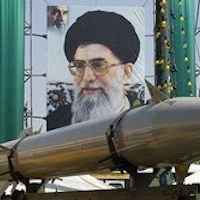
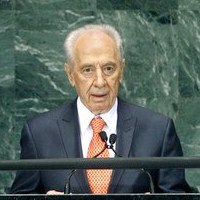
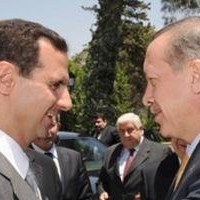

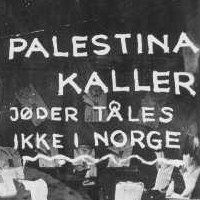




WikiLeaks: U.S. Discusses Operation Cast Lead Investigations with IDF | Middle East, Israel, Arab Wo http://t.co/emPcLOWN
WikiLeaks: U.S. Discusses Operation Cast Lead Investigations with IDF | Middle East, Israel, Arab Wo http://t.co/emPcLOWN